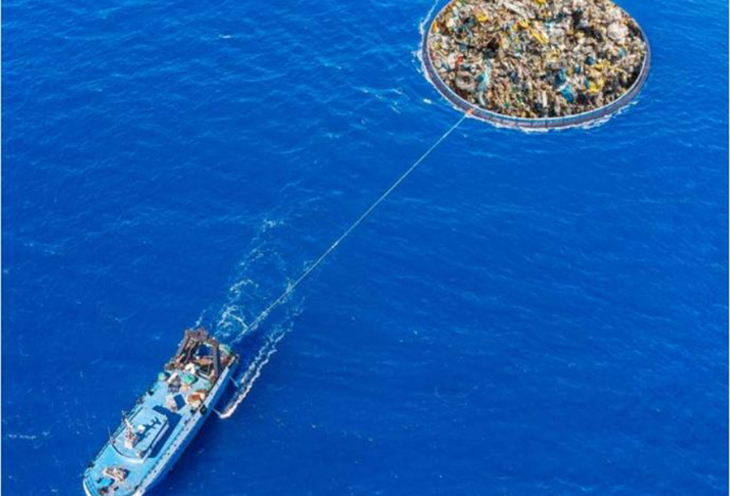
Chemical engineers are pioneering a groundbreaking process aimed at enabling diesel ships to transform collected plastic waste into fuel directly onboard.
This innovative solution, known as “blue diesel,” promises significant savings in time, money, and emissions. It addresses the challenges faced by ocean-cleaning vessels, reducing the need for time-consuming trips to the mainland for offloading plastic and refueling.
Every year, millions of tons of plastic find their way into the oceans, forming concentrated areas called “gyres” where currents converge. These gyres, spanning thousands of square miles, accumulate plastic waste. While organizations like The Ocean Cleanup rely on the ocean’s natural movement to gather trash, the process of sailing back and forth from these gyres to unload plastic and refuel is laborious.
Professor Nikolaos Kazantzis and Michael Timko, based at the Worcester Polytechnic Institute in Massachusetts, drew inspiration from the similarity in chemical bonds between plastic and fossil fuels. Their dedication and ingenuity led to the development of blue diesel, a revolutionary approach to addressing plastic pollution and fuel consumption in maritime operations.
“Our research team is modeling a specialized reactor that converts harvested waste plastic using an innovative chemical process called hydrothermal liquefaction (HTL),” Kazantzis said when he spoke to Cambridge press the previous year. “This compresses the plastic at high temperature and high pressure into “blue diesel” (the name emphasizes its marine origins).”
Their project received financial support through a $259,000 grant from the National Science Foundation’s 2026 Idea Machine competition, spanning two years.
Elizabeth Belden, a team member and a Ph.D. candidate in her fifth year of study, highlighted the technology’s potential benefits for river navigation. This is because it would significantly reduce fuel consumption, and, notably, a significant portion of ocean-bound plastic pollution originates from major river systems.
To assess the project’s economic viability, they utilized existing data concerning the Great Pacific Garbage Patch in the Pacific Ocean. Several organizations are already actively engaged in cleaning this region using large ship-mounted booms and nets.
“The project is still in the early stages,” Nikolaos shared, “but it appears that economically, the HTL system is a modest additional cost relative to the clean-up vessel and boom system.”
“The next challenge will be to creatively structure the portfolio of the public policy responses of collecting and removing waste plastic – including the impact on marine and human health. We will have to have reliable rigorous scientific responses to inform and incentivize.”
What are your thoughts? Please comment below and share this news!
True Activist / Report a typo


